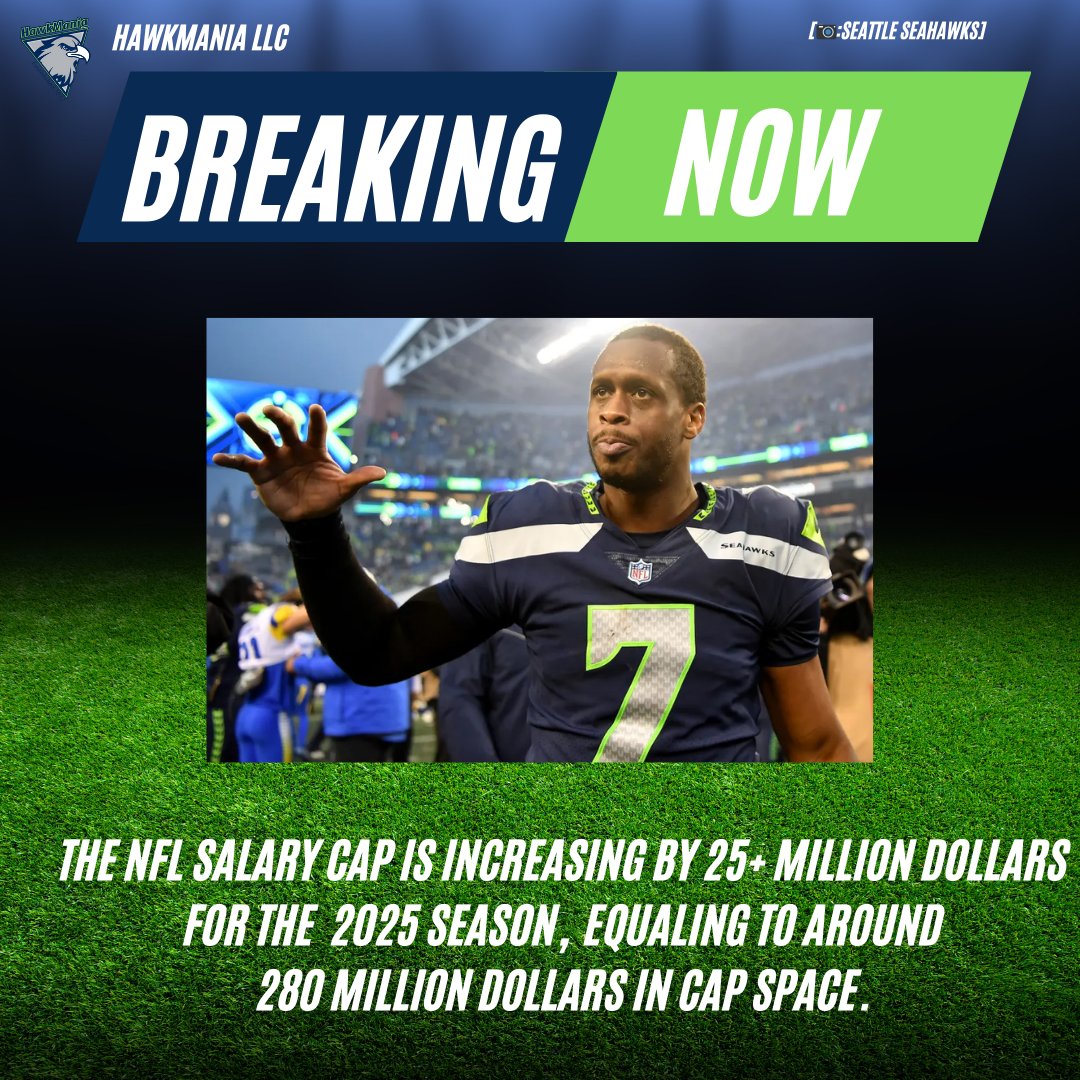The National Football League (NFL) has announced a significant increase in the salary cap for the 2025 season, projecting a range between $277.5 million and $281.5 million per team. This marks a substantial rise from the 2024 cap of $255.4 million, reflecting the league’s robust financial health and burgeoning revenue streams. Despite this upward adjustment, the Seattle Seahawks find themselves facing a challenging financial landscape, currently exceeding the salary cap by approximately $13.46 million.
Understanding the NFL Salary Cap Increase
The NFL’s salary cap serves as a financial boundary, ensuring parity among teams by limiting the amount each franchise can spend on player salaries. The projected cap for 2025, set between $277.5 million and $281.5 million, represents an increase of at least $22.1 million from the previous year. This escalation is attributed to the league’s expanding revenue, driven by lucrative broadcasting deals, sponsorships, and a surge in global popularity. Notably, the salary cap has risen by over $53 million in the past two years, underscoring the NFL’s financial momentum.
Seattle Seahawks’ Current Cap Situation
Despite the increased salary cap, the Seattle Seahawks are currently operating over the limit. According to OverTheCap, the team’s total cap liabilities amount to $302,304,328, placing them approximately $13.46 million above the upper projected cap of $281.5 million. This overage necessitates strategic financial maneuvering to comply with league regulations before the commencement of the 2025 season.
Key Financial Commitments
A significant portion of the Seahawks’ salary cap is allocated to a few high-profile players:
- Geno Smith (Quarterback): Scheduled to earn a base salary of $14.8 million, with a prorated bonus of $13.5 million and additional bonuses totaling $16.2 million, culminating in a cap hit of $44.5 million.
- D.K. Metcalf (Wide Receiver): Set to receive a base salary of $18 million, a prorated bonus of $9.875 million, and a roster bonus of $4 million, resulting in a cap hit of $31.875 million.
- Tyler Lockett (Wide Receiver): Earning a base salary of $10 million, with a prorated bonus of $13.895 million and additional bonuses, leading to a cap hit of $30.895 million.
- Dre’Mont Jones (Defensive End): With a base salary of $16 million, a prorated bonus of $9.135 million, and other bonuses, his cap hit stands at $25.645 million.
- Uchenna Nwosu (Linebacker): Receiving a base salary of $14.48 million, a prorated bonus of $3.75 million, and additional bonuses, totaling a cap hit of $21.168 million.
These five players collectively account for a substantial portion of the team’s salary cap, underscoring the financial challenges the Seahawks face.
Strategies for Cap Compliance
To address the cap overage, the Seahawks have several options:
- Contract Restructuring: Renegotiating existing contracts to convert base salaries into signing bonuses can spread cap hits over multiple years, reducing immediate financial impact.
- Player Releases or Trades: Releasing or trading players with significant cap hits can free up space, though this may involve absorbing dead money—cap charges for players no longer on the roster.
- Extensions: Offering contract extensions to key players can lower current cap hits by spreading costs over additional years.
Each approach carries inherent risks and benefits, requiring careful consideration by the team’s management to balance competitiveness with financial prudence.
Implications for Team Building
Operating over the salary cap restricts the Seahawks’ ability to engage in free agency and retain key talent. The team must achieve cap compliance before the league’s new year begins, necessitating prompt and strategic financial decisions. The increased salary cap offers some relief, but prudent management is essential to navigate the overage without compromising the team’s competitive edge.
Comparative Analysis
The Seahawks are not alone in facing cap challenges. For instance, the New Orleans Saints entered the offseason with a $47 million deficit. The salary cap increase provides some alleviation, but these teams must still undertake significant financial restructuring to achieve compliance.
Conclusion
The NFL’s salary cap increase to approximately $280 million per team reflects the league’s financial growth and offers teams additional resources for roster development. However, for the Seattle Seahawks, currently $13.46 million over the cap, this necessitates strategic financial adjustments. Through contract restructuring, player transactions, and extensions, the Seahawks aim to navigate these challenges, ensuring compliance while maintaining a competitive roster for the upcoming season.
